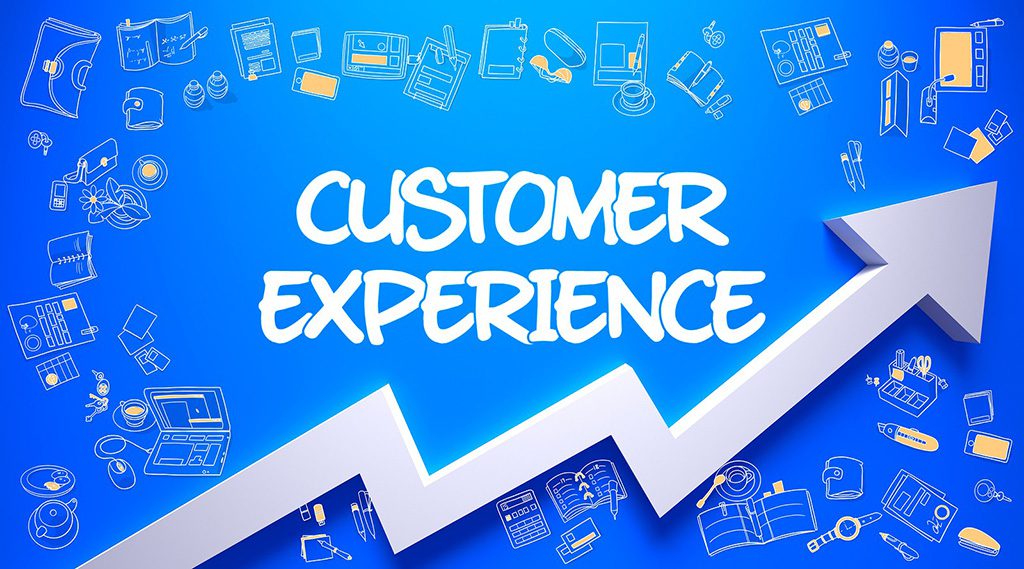
Nov 11, 2022 | Customer Experience
In today’s world, your customers are perhaps your company’s most valuable asset. Customers can make or break your business, so it’s important to always treat them with care and respect. While there is no one-size-fits-all strategy for the customer experience, some best practices are essential if you want to remain competitive in your industry.
Always Deliver The Three “Bs”
- Be proactive: Give customers what they want before they even know they want it. For example, when you find out that someone is going to be traveling, send them an email with suggestions for hotels and restaurants in the area.
- Be responsive: A customer-centric company will respond quickly to requests and complaints. If a customer is having trouble with your product or service, help them fix it immediately. Your prompt responses will make your customers feel valued and respected—and help build loyalty as well!
- Be respectful: It’s easy for businesses to treat their customers like faceless statistics on spreadsheets or special offers in the mail; don’t do that! When talking with customers—whether in person or online—remember who you’re dealing with: actual people who are spending their hard-earned money on your products/services because they believe in what you’re doing. This means showing empathy when dealing with complaints or problems. Remember that every person has different needs and values, so no two experiences are exactly alike!
Next, here are two critical steps to make certain you grow your most valuable asset – your customers!
Step 1: Define your focus. The goal is to be known for ultimate customer experiences.
The first step is about defining your focus. What makes you distinct from the competition, and how can you use that difference to set yourself apart? You want people to remember your brand in a positive way—for example, “If I need something fixed on my car, I go see Mark. He knows all about cars and always takes great care of me!”
To define your focus, you must be clear about who you are and what you do. This might sound obvious, but it’s not as easy as it appears. Many businesses don’t know exactly why they exist or how they fit into the marketplace.
To find out, first make certain you can answer these three questions in a manner that will be compelling to customers:
- What do I want to be known for?
- How can I use my strengths to help me stand out from the competition?
- What one word would people use to describe me?
Step 2: Stay connected with your customers. The goal is to remain top of mind and create an emotional connection with customers through social media.
The goal is to remain top of mind and create an emotional connection with customers. One critical method for achieving this is through social media. You can do this by:
- Listening and responding to customer comments on your social channels.
- Sharing helpful tips, stories, or promotions through your social channels.
- Building relationships with customers by responding in a prompt and personal way when they reach out via email or direct message (DM).
Commit to becoming known for exceptional customer experiences and staying connected with customers to keep them coming back.
The Ultimate Customer Experience® is the key to success, and not just because it can turn a one-time customer into a repeat client. It’s also the best way to keep your existing customers coming back.
According to a survey by Zendesk, 89% of customers say they would become more loyal if their issues were resolved quickly. If you want customers coming back again and again, make sure you resolve issues quickly — better yet, prevent them from happening in the first place!
Deliver the Ultimate Customer Experience® – and create distinction through your focus on uniqueness – then watch your most precious asset…your customers…continue to grow in value.

Oct 27, 2022 | Business Distinction, Customer Experience, Leadership
We recently booked two major events for me as a keynote speaker in January 2023. One was a group where a member of the C-Suite had me speak at his meetings for two previous employers. The other was from a CEO of a group I addressed about a decade ago. He contacted me and said, “It’s past time that we had you back!”
The important aspect I wanted to share about this is not that I have booked a couple of really terrific programs for great leaders. The critical point is that I’ve stayed in touch with both of these clients (in a non-“sale” oriented manner) on an ongoing basis.
Relationships matter significantly in business; as a result, referrals are often the lifeblood of our success.
I’m not saying that all of my business comes through word-of-mouth recommendations. However, I have found that the more time I invest in nurturing relationships with colleagues, clients, and associates, the more likely they are to refer me or work with me again. And when it comes down to it, isn’t that what we ultimately want – a strong network and engaged community?
Here are three ways to enhance the relationships you have with clients and prospects:
- Keep in touch regularly. It doesn’t matter whether it’s through a quarterly newsletter or a simple “thinking of you” card. DON’T SPAM! Engage! Bring value to the conversation by helping, not selling.
- Deliver help without expectations – offer to introduce them to a colleague or share an article you think they might find valuable. Show interest and invest in their success by providing thoughtful advice or insights that may benefit them.
- Make time for in-person conversations and connections, whether it’s a coffee meeting or attending their industry event. We strengthen relationships through face-to-face interactions. Catch up on what’s new in their world. Share valuable information or resources with them.
Investing in relationships can pay off tremendously in the long run.
Build trust and loyalty by consistently demonstrating that you value the professionals you work with and for, then watch as your network grows more robust and engaged.
So, reach out to colleagues, clients, and associates today and strengthen those connections. You never know where they might lead!

Jun 27, 2022 | Business Distinction, Customer Experience
This post will refer to a speaker discussing politics; however, I promise this is NOT about political philosophy. It IS about an aspect frequently overlooked by many business leaders — even those with the best intentions.
In today’s business environment, research shows that customers are looking for organizations that reflect their values. (McKinsey & Co.’s white paper, “Diversity Wins,” is but one of the major research projects proving the point.)
Organizations that display their commitment to diversity and inclusion will meet the needs of a varied and constantly changing customer base.
However, an additional type of diversity is a critical ingredient in ensuring that your organization can create distinction in this challenging time.
At the recent Youth Citizenship Seminar at Pepperdine University, liberal commentator Steven Donnell asked the students in attendance what “diversity” meant to them. As you might imagine, they responded with answers such as racial equity and acceptance of all sexual orientations.
Donnell then stated another challenge is that many liberals he knows have zero conservative friends — and vice versa. He challenged the group of students to not only concern themselves with the most frequently mentioned aspects of diversity but also incorporate the diversity of thought into their lives.
Organizations that value “thought diversity” are open to new ideas and different ways of thinking. This openness allows them to understand their customers better and anticipate their needs.
By valuing thought diversity, you send a message to your customers that you’re open to hearing their perspectives and addressing their needs. This type of diversity is critical for customer success.
In 1970, singer/songwriter Joe South had a minor hit with a song, “Walk A Mile in My Shoes.” The lyrics may be even more relevant today than when it was first released:
If I could be you, if you could be me
For just one hour
If we could find a way
To get inside each other's mind
If you could see you through my eyes
Instead of your ego
I believe you'd be
Surprised to see
That you've been blind
Walk a mile in my shoes
Walk a mile in my shoes
And before you abuse, criticize, and accuse
Walk a mile in my shoes
songwriter: Joe South © Concord Music Publishing LLC; quoted as Fair Use commentary
You can have a team that displays the diversity we all desire regarding the aspects usually associated with the inclusion efforts. These are efforts we should all be making.
But if everyone on your team thinks alike, you will likely not be appealing to the broad spectrum of customers you desire.
Certainly, it is challenging to deal with people who disagree with how you see the world. However, the result is worth it for your customers — and your company!
The next time you’re discussing diversity and inclusion in your organization — as you need to — make sure that thought diversity is on the agenda. Just like the other forms, it’s a type of diversity critical for customer success.

May 31, 2022 | Business Distinction, Current Event, Customer Experience
In today’s market, customers have more choices than ever before, and they’re not afraid to switch brands if they’re not happy. As every business strives to stand out from the competition, an increasing number are now turning to the customer experience as their critical differentiator.
That’s why businesses that focus on delivering an “Ultimate Customer Experience®” are gaining a competitive edge.
- By definition, an Ultimate Customer Experience is one so positive and memorable that it assures customer loyalty and ongoing referrals.
It’s no secret that providing an exceptional customer experience can be a challenge — but the rewards are well worth the effort.
- Businesses that deliver an Ultimate Customer Experience enjoy:
- increased customer loyalty
- higher customer lifetime value
- and more robust word-of-mouth marketing.
Here are three steps to initiate the Ultimate Customer Experience® (UCX):
- Define what an exceptional customer experience looks like for your business. This means going beyond simply evaluating, then meeting customer expectations. First, you need to commit to significant research to understand what your customers expect you to deliver thoroughly. Then, develop the internal systems required to exceed those expectations at every opportunity.
- Educate and train all employees on the importance of delivering an exceptional customer experience. Everyone from the front-line staff to the CEO needs to buy into the idea that the customer experience is a crucial differentiator for your business. Your team must learn the specific aspects of what determines a UCX for your particular business – and they must be educated on the attitudinal and behavioral elements required to create high levels of customer engagement.
- Constantly measure and improve the customer experience you’re delivering. Use customer feedback to continuously improve the way you do business. Your customers are likely to provide their feedback via social media and other forms of communication. Commit to leveraging technology to drill deeply into where the errors are in your processes so that you can stop manufacturing customer dissatisfaction.
By following these steps, you can start to differentiate your business by delivering an Ultimate Customer Experience®. When you accomplish this, you will stand out…and earn more!
If you’d like to learn more about the impact a UCX will have on your business, contact me! (I’m available on every social media platform – and email: Iconic@ScottMcKain.com)
We own the federally registered trademark on the term “Ultimate Customer Experience®” — and are, therefore, the ONLY company that can legally present training, coaching, speeches, and consulting on this vital topic.
The bottom line is this: if you want your business to thrive in today’s competitive market, you need to focus on delivering an Ultimate Customer Experience.® It’s the distinction difference that will make you stand out from the crowd.

May 14, 2022 | Customer Experience, Sales & Retail
At a recent conference, an executive told me that she used to be a general manager of a Walmart store. She related that the training she received was from former members of the inner circle of founder Sam Walton. She then had a dreamy look and said, “Those were great days! Oh, the way things used to be…”
Tradition is essential to many businesses and organizations. It can be a source of strength, providing a sense of stability in an ever-changing world.
- However, tradition can also be a source of stagnation, causing businesses to cling to old ways of doing things even when they’re no longer effective.
Steve Jobs famously told Tim Cook that Apple should never adopt the mantra of “What would Steve do?” He felt Disney had suffered and stagnated by always asking, “What would Walt do?” during times and situations that their founder had never encountered.
Innovation is essential for any business or organization that wants to stay relevant and competitive. But it’s not always easy to strike the right balance between tradition and innovation. Too much innovation can cause chaos and confusion, while too little can leave you stuck in the past.
It seems to me that the key is to find a way to respect and value tradition — while also embracing innovation. After all, the best way to serve your customers is to constantly look for new ways to exceed their expectations.
Here are four ways we demonstrate a respect for tradition:
1. We keep things fresh by constantly looking for new ways to do things, but we also recognize that some things are best left unchanged. It’s the oldest example around, but did we really need “New Coke”? I think not. However, recent innovations — like an energy drink that combines Coke and coffee — keep an established brand fresh. This approach can work for a small business just as effectively.
2. We strive to provide the best possible customer service, but we also know that sometimes the old-fashioned way is still the best way. In today’s world, it seems we want to throw out anything perceived as “old.” Yet, just because it has been around for a while doesn’t necessarily mean it is out of date. As a bourbon lover, I’d be the first to tell you that there’s a reason the “Old Fashioned” has not gone out of style. Don’t change something just to make a change.
3. We embrace change when necessary, but we also hold on to some things just because they’re a part of who we are. In other words, core values have always been critical — and you don’t need to change those. You can improve and tweak approaches, but “throwing the baby out with the bathwater” is seldom a profound strategy.
4. We value the experience and expertise of our elders, but we also recognize that they may not always be aware of the latest advances. It’s sad but true. You haven’t earned the right to comment or advise on an issue or situation you aren’t aware of. That means that if an experienced executive or entrepreneur believes she can make decisions about technology which she doesn’t know much about, she is deluding herself. No one knows everything. This is why I don’t listen to a Hollywood star’s political opinion. Playing an exemplary Hamlet doesn’t ensure that you know what you’re talking about regarding climate change. Respect people in the areas where they have earned respect.
- As we strive to provide the best possible customer experience, we must also realize that sometimes (perhaps often), “the way it used to be” really is the best way.
When I asked the woman at the event why the previous training was so superior to current efforts, she replied, “Because all of those involved with Sam Walton had a laser-focused approach on the customer. Today it has become too much about inventory management and getting required reports done and submitted to Bentonville.”
Let’s face it — she is right!
- Sometimes the way it used to be — is the right way…when executed congruently with today’s marketplace demands.

May 9, 2022 | Customer Experience, ICONIC
It can be tempting to oversell our products and services in today’s competitive world. But this approach can backfire, making customers and prospects want to avoid you altogether.
This aspect has always struck me as slightly ironic, as no person wants to be around a pushy salesperson — even pushy salespeople when THEY are the customer! Yet we can easily fall into the trap of overdoing it when it comes to our own products.
Here are a few key things to keep in mind if you want to avoid over-selling:
- Remember that your customers are people too, and nobody likes to be “sold.” Instead of thinking about how you can make a sale, focus on building a relationship. Focus on building relationships with potential customers rather than solely on making a sale.
- In my book, ICONIC, we discuss how top producers in every industry are the ones who focus on creating Ultimate Customer Experiences ® — not those who push prospects to the point of surrender or escape. By getting to know customers personally, we can pave the road that will ultimately lead to more sales.
- Next, don’t be afraid of competition. In many cases, customers will appreciate having multiple options from which to choose.
- Your job is to become the most distinctive option so that you do all that is possible to ensure selection. This means you constantly ask: what is unique and remarkable about doing business with you — as opposed to your competition?
- Finally, focus on engagement rather than hard selling. If you can get customers involved with your product or service in a meaningful way, they’ll be more likely to buy from you down the road.
As mentioned earlier, customer engagement is a key to avoid the appearance of over-selling.
Here are four steps to help you improve:
- Make it easy for customers to give you feedback. You can make it easier for them to let you know when you provide them with a way to do business that is simple and convenient. Having this in place will also alert you when there is friction in your process that needs to be eliminated.
- Use social media to start a conversation. For example, use short videos that explain the value of your product or service (from the customer’s perspective) and post them on TikTok, YouTube, Facebook, and Twitter. If you’re not using social media to its maximum benefit for connecting with customers, you’re missing out on a huge opportunity.
- Get personal. Customers like doing business with people they know and trust — get to know your customers on a personal level. Examine your CRM and other tools to see if you’re recording easily accessible information that helps you remember — and use — your customers’ personal preferences.
- Make it fun. As mentioned, nobody wants to be sold to — but everyone likes to have fun. If you can find ways to make your product or service more enjoyable, customers will be more likely to engage with you — and therefore, buy from you. The goal is NOT to be frivolous — but it IS to enhance the enjoyment factor of doing business with you. No one likes friction when dealing with any organization.
The key is to strike the right balance between promoting your wares and engaging with potential customers. If you come across as too pushy, people will tune you out. But if you’re too subtle, they may not even realize that you have something to offer.
Finding the sweet spot can be tricky, but it’s worth taking the time to get it right. By following these tips, you can avoid over-selling and instead focus on building relationships, engaging with customers, and becoming the most distinctive option in your industry.
(We would love to assist you in finding that “sweet spot” in customer engagement! Contact me here for more information on how keynote presentations, consulting, coaching, and virtual training can move you and your organization to distinction.)






